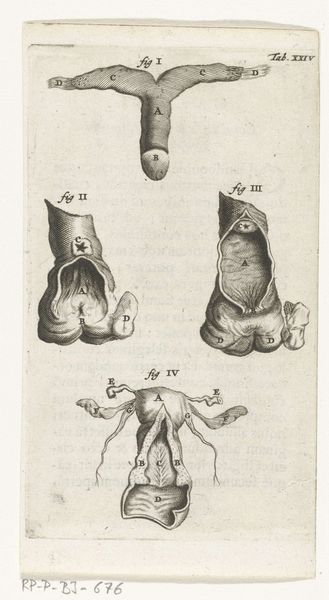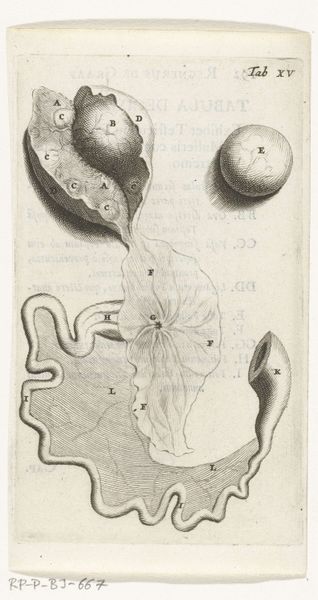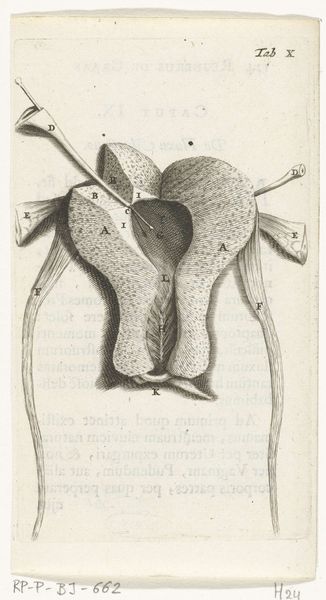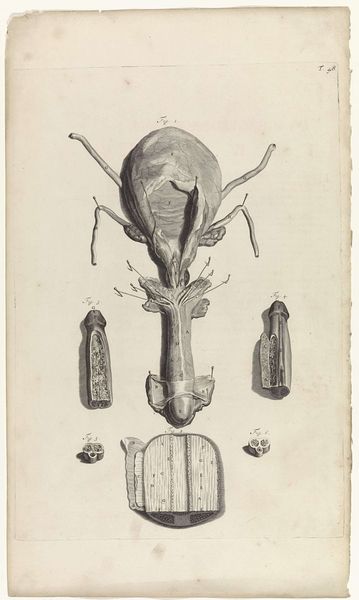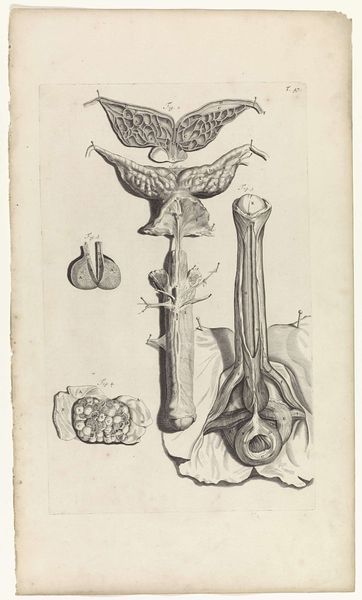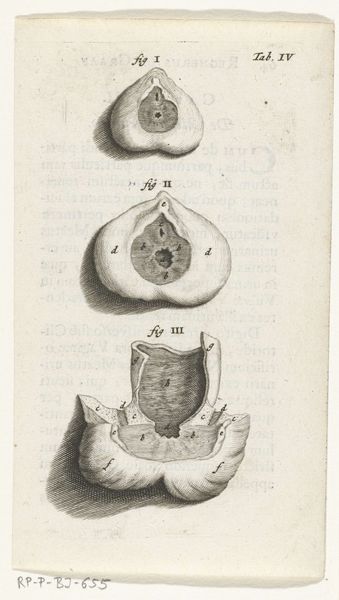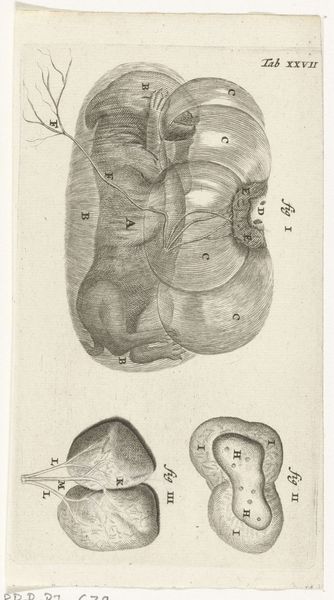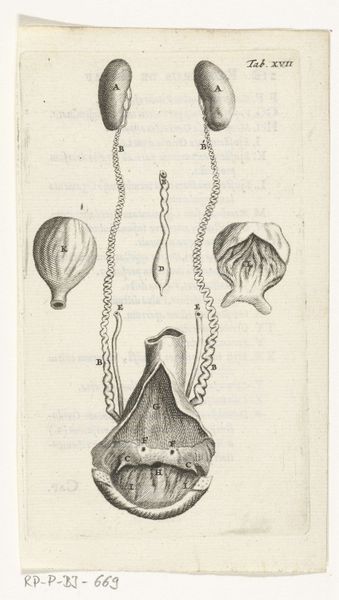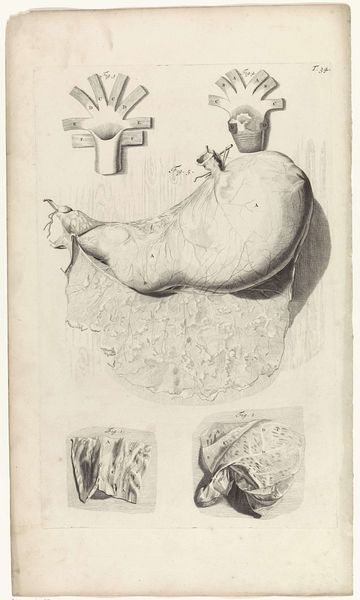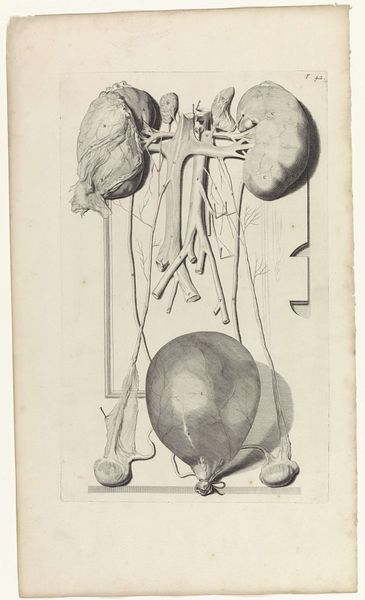
print, engraving
# print
#
old engraving style
#
11_renaissance
#
geometric
#
history-painting
#
academic-art
#
engraving
Dimensions: height 161 mm, width 126 mm
Copyright: Rijks Museum: Open Domain
This anatomical representation of the tongue, nose, and index finger was created by Nicolaas van Frankendaal. The stark black lines against the pale paper immediately draw our attention to the intricate patterns of the human anatomy. The formal arrangement places each organ in isolation, inviting a focused study of its texture and form. The organization of the composition echoes a period where anatomical study was deeply rooted in empirical observation. The use of line to delineate each structure emphasizes the Enlightenment's focus on clarity and rational understanding. Frankendaal employs a meticulous approach, suggesting an underlying belief in the power of detailed representation to unlock nature’s secrets. The linear precision and formal layout speak to a moment when science sought to categorize and understand the natural world through visual means. In dissecting and representing the body, Frankendaal offers not just an image, but a systematic examination of the human form, reflecting a broader cultural impulse to dissect, analyze, and ultimately, understand the complexities of existence.
Comments
No comments
Be the first to comment and join the conversation on the ultimate creative platform.
